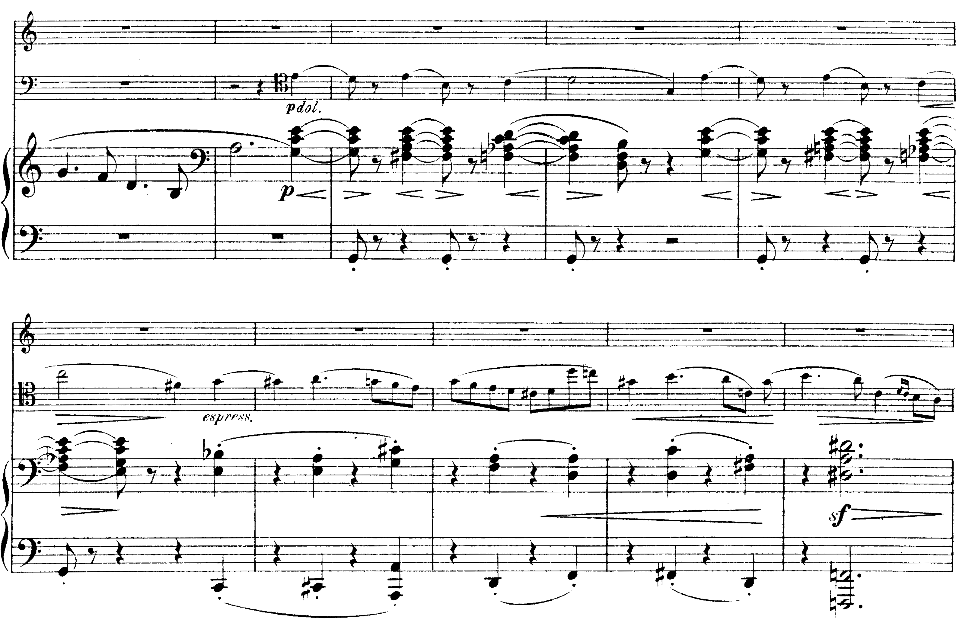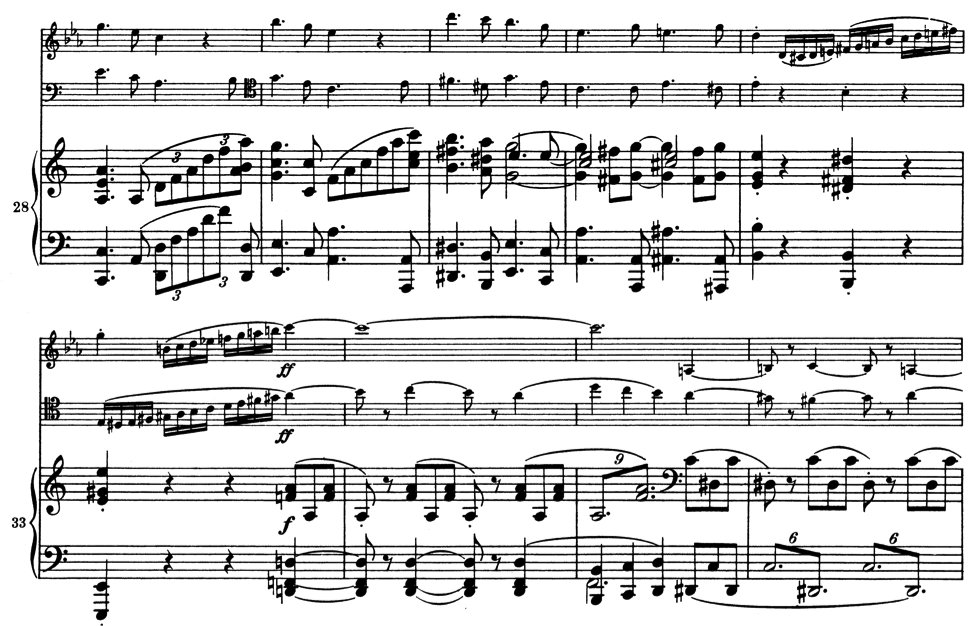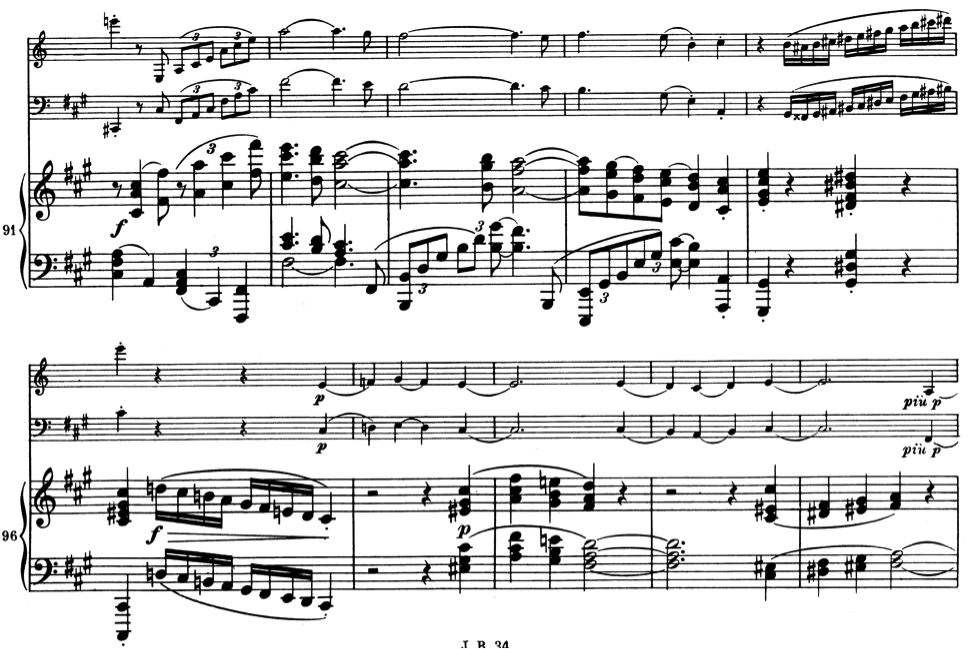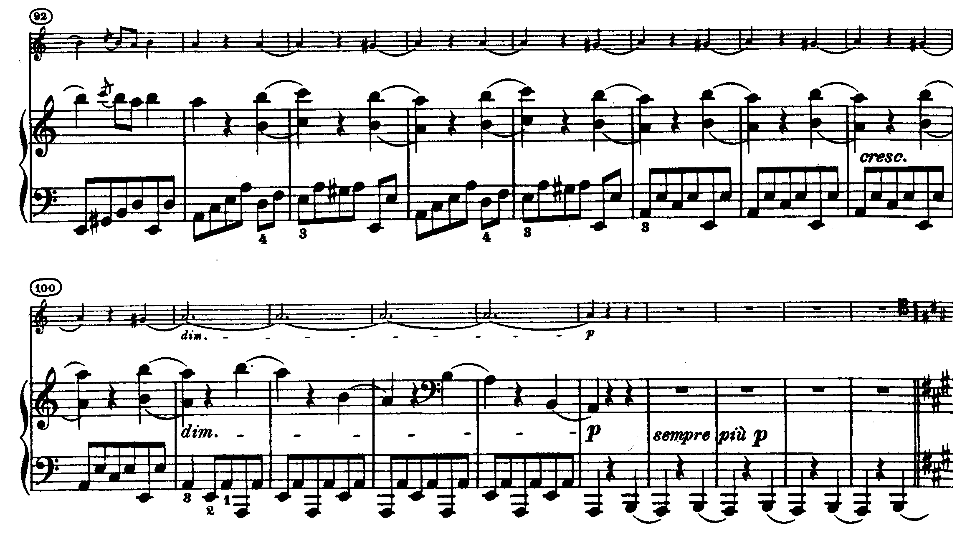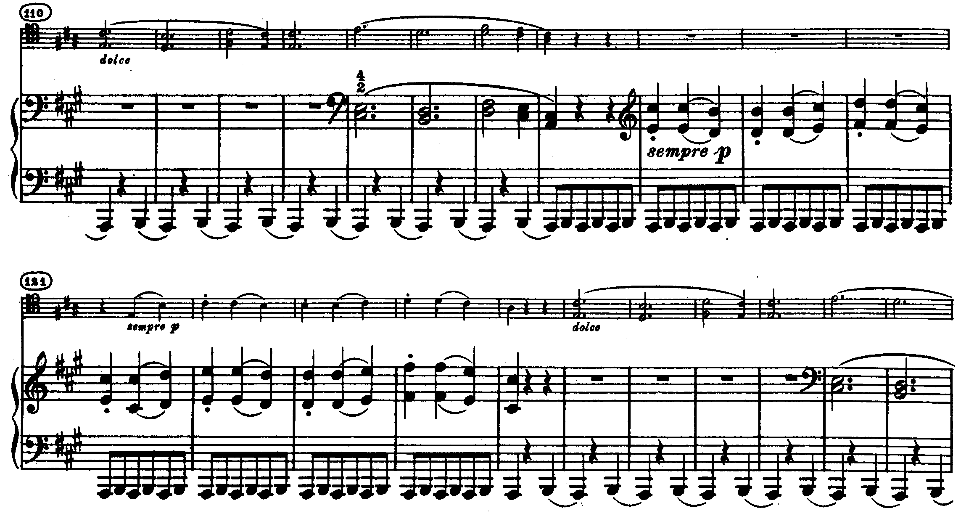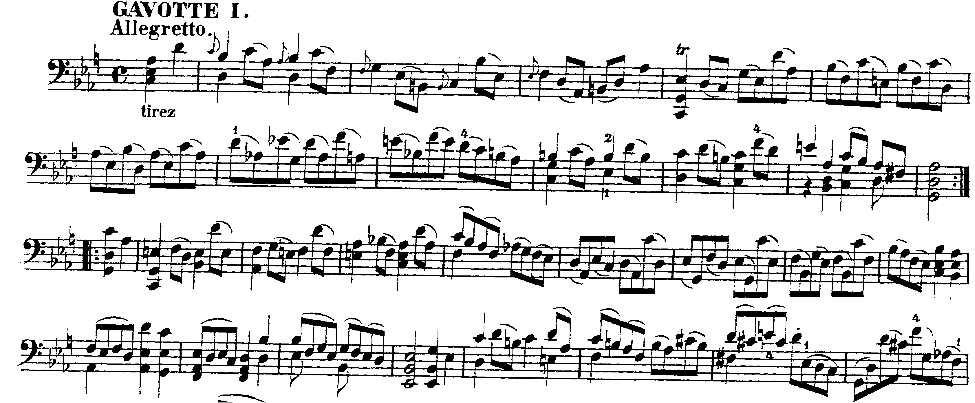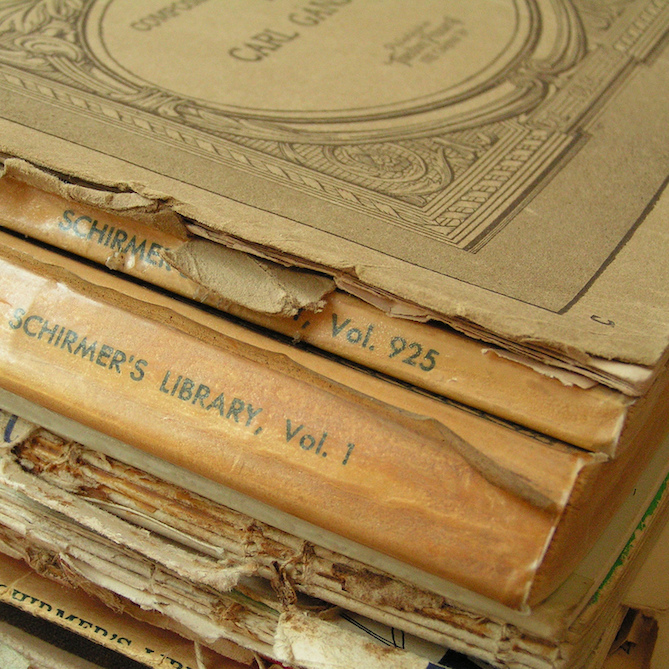
Phrasing and Meter
Robert Battey
Today’s ruminations have to do with musical phrasing. As a music critic for the Washington Post, I’m regularly attending concerts of all kinds. That, plus a lot of chamber music coaching, leads me to ruminate on this subject often. The ability to produce clear phrasing is just as important as having good rhythm or intonation, but a lot of folks don’t do it well, or as well as they think. Remember, in grade school, when we had to take turns reading aloud from the book? And how some kids were flat, with little inflection and the same pause between every word, while with others it came out sounding like natural speech? To a certain extent it’s the same with music, sometimes even at the professional level.
It’s often been remarked that the average technical level of musicians emerging from conservatories today is far higher than a generation or two ago, and yet the number of truly great, communicative artists seems to remain constant. And I believe it’s partly because only this select handful understands the central importance of phrasing, and the myriad ways it may be accomplished on their instrument.
My two fundamental principles are: (1) Music is about communication, and composers expect that intelligent performers will create communicative phrases following natural laws of melody and stylistic conventions of their (the composers’) time. (2) These phrases are placed in the text with the utmost care, and the first thing the interpreter must do is to study and fully understand the text.
If the performer, in approaching a new piece, does these two things with humility and sincerity, trying his/her best to feel the music as the composer felt it, the performance will be alive. There’s nothing whatever wrong with listening to recordings of great artists play the piece as long as that is not how you’re ‘learning’ the music. Because while all great artists have mastered the first principle, they don’t always observe the second. It could be carelessness, it could be “tradition,” it could be that they thought they had a better idea. Whatever; you must get the blueprint of the music in your head through the text, and nowhere else.
And to increase your basic understanding, focused listening and score-study is essential. This gives you musical knowledge and frames of reference for a particular composer. It’s best to study non-cello items; vocal works, piano music, violin sonatas, symphonies, etc. In this way you learn a composer’s overall style, and can fit your sonata or concerto into it. And for recordings, it should go without saying that you should seek out performers who were temporally and personally closest to the composer, regardless of the vintage of the recording. Follow along with the score and note when they do something that’s not written or don’t do something that is. Try to figure out why.
Phrasing is accomplished, of course, through a variety of means: agogic manipulation, dynamics, vibrato, accents, slurs and articulations, and numerous other arrows in our expressive quiver. Going through them all in the abstract would be lengthy and pointless. But I would like to examine, for a moment, one rather mundane aspect of phrasing that’s too often overlooked or misunderstood. That aspect may be described as the importance of bar lines. So this is not a “how to” article as much as a “what to” article. Just something that’s been on my mind.
*****
It amazes me, sometimes, how cavalier some otherwise-fine artists are about fairly straightforward matters, things that any literate musician could discern and carry out. And one of the most prominent ones is metrical organization—dealing intelligently with where and how the music falls on the bar line.
Bar lines are not simply ways of organizing and tracking all the printed notes; they are also gravitational points which the music itself sometimes hews to and sometimes pushes against. As everyone knows, in each meter different beats have different stresses, which undergird the music. (In 4/4 time, for example, the strength of the beats are, in descending order, 1, 3, 2, 4. In 3/4 time, the strength in descending order is 1, 3, 2.)
Usually, the natural stresses of a given phrase will align with the bar lines. But when they don’t, that’s when things get interesting. This metrical “dissonance” is never an accident, any more than a harmonic dissonance is. When the phrase and the meter seem to clash, the performer’s task is not to “paper over” or downplay it, but rather to bring out the tension. Because just as harmonic dissonance makes a resolution that much more powerful, so too will natural stresses which fall against the bar-lines (for a period of time) make the ensuing alignment into an “event” that gives the passage a unique, memorable twist.
The great composers organize and control every detail of the work, and when Mozart or Mahler begins a melody on an up-beat, he expects it will be played that way. Too many musicians simply look at slurs or other phrasing indications without the more basic recognition of how the line is actually supposed to “go.” But with this simple recognition, and following it wherever it leads, the music takes on much greater complexity and interest. For illustration, let us look at passages by the Three B’s.
*****
First, from the opening movement of Beethoven’s “Archduke” Trio, where the composer goes to great lengths to disorient us metrically:
Starting at m. 43 (the key change), he proceeds for fifteen measures with 4-beat “bars” that actually begin on the fourth beat of each measure. By m. 51 every single listener thinks that the new theme starts on “one.” Sadly, from the recorded evidence, most performers think so as well, despite having the music in front of them.
The punch-line of Beethoven’s “gotcha” is of course in m. 59-60, when the cello’s upper D in m. 59 lasts a beat too long, throwing everything awry. But then he “rubs it in” with the almost comically square tune starting in m. 60. Here’s the thing though: perceptive musicians (both pianist and cellist) will drop hints about what’s going on by simply playing the new theme as it falls metrically, i.e. the first two notes as an upbeat and the next two as a downbeat. This sets the listener slightly on edge (“what the heck is going on?”) and, again, makes the punch-line all the more of a payoff.
But check YouTube and see if you can find a group that plays like they understand this; either the pianist or later the cellist. From my CD collection of major artists, this has eluded most everyone.
******
With Brahms, this same displacement device first appeared in a big way in his Piano Quintet (Op. 34) and became almost an obsession in his late period. The most notorious example is the big second theme in the Double Concerto (starting at the pick-up to m. 153):
Virtually every cellist “misreads” this melody and plays the E as though it were a down-beat and the D (the actual down-beat) as a weak beat. This wrong phrasing continues to the next bar, and the next, and often never gets put right:
From Feuermann…
To Rostropovich…
To Ma…
To Capucon.
Again, Brahms is notorious for this practice (which makes these artists’ lapses all the more odd), but he is far from an outlier; deliberate incongruities between bar-lines and the surface phrasing can be found from Bach onward.
Go to your cello and play the solo the way it actually falls across the bar-lines. When I make folks do it, it’s a revelation. The two big high notes (the C and later the D) take on a whole different meaning when they are correctly placed in Brahms’s careful metrical scheme.
*****
Just one other example among many comes from the Clarinet Trio:
The triplet theme starting in the pick-up to m. 14 is perfectly straightforward; but the way Brahms sets up m. 32-33, the ff cello tune on top of it (the actual theme) now sounds like a down-beat, and is pretty much always played like that. Thence until m. 43 the passage is, in its way, a xerox of the “Archduke” passage.
Things right themselves for awhile, but the displacement returns with a vengeance in the pick-up to m. 97. Here again, the tension between how the phrase would be played “in a vacuum” vs. how Brahms set it metrically is almost never captured.
And the same for the coda (m. 201):
Neither of these performances, with top artists, realize this tension:
Brahms Trio with Leister, Bognar and Boettcher
Brahms Trio with Fröst, Hagen and Andsnes
*****
This isn’t always just about fourth beats sounding like first beats. In Beethoven’s Scherzo from his A major sonata, the game is more subtle. Here, in a much faster tempo, the phrases are in groups of bars, not on beats within a bar. This is called “periodicity,” referring to the convention of writing mostly in four-bar phrases, as was done throughout the common-practice period. And the same hierarchy of strong and weak beats now applies to a group of four bars. Although Beethoven would never write an entire movement with unbroken four-bar periodicity, there is a very clear distinction between phrases that are of a different length and motives that play around within the standard frame. Such is the case as the piece transitions into the “Trio” section, starting at m. 93:
The single most confusing thing here is the placement of the double bar. It’s the most natural thing in the world to assume that a new melody, in a new section with a key change, starts on “one.” But despite all that, here it doesn’t. Once you perceive the periodicity that’s been chugging along at least since m. 93, it becomes clear that the new theme begins on “two,” and thus the phrasing that we hear most of the time (with natural stresses on the first and third bars of the melody) is wrong. Does this mean you should come crashing down on m. 113 with a thud? Of course not; but it does mean that m. 111 is supposed to be stronger than m. 110. This pattern continues without alteration throughout the Trio, all of the music “displaced” a bar. I’m embarrassed to admit how long it took me to grasp this, but the piece now sounds like gibberish when played without this understanding.
What’s striking about all of this is that rendering these kinds of passages correctly is not hard. You don’t have to be a Casals or a Greenhouse. You just have to approach the music with an understanding of these simple principles and throw away “traditions” or the resumes of whomever’s performances you’re used to hearing. We all know the difference between playing an up-beat and a down-beat, and if you can just keep them straight, you’ll be ahead of a lot of big names out there.
*****
In Bach, by contrast, the passages involving metrical dissonance are more subtle, and rendering them properly is hard. There are many such spots, but I’ll just point out two, both from the Fifth Suite.
A Gavotte is a French dance in duple time that begins half-way through the bar. And where a phrase begins in a measure determines its destiny no matter how much it may “make sense” with the metrical stress on the first note. The composer set it this way for a purpose, and that purpose was to play around with the ambiguity that the bar-line creates. But sadly, I’ve never heard a performance that didn’t sound as if the first Gavotte started on “one.”
Phrase after phrase, you hear even the greatest cellists unwittingly distorting the metrical structure that Bach built into the piece; m. 20-22 are particularly misshapen due to this lapse. It is indeed a challenge to render this Gavotte with the correct metrical placement, because the chords are so heavy and difficult. But I wish I heard more folks at least trying.
The challenges of our last example are still more difficult; perhaps impossible. But the fact that they’re impossible doesn’t mean we shouldn’t be aware of them and make our interpretive decisions with that awareness.
In the Courante from the same Suite, the first 12 bars have a metrical complexity that is off the charts.
For me, the piece opens with at least two, and arguably four, bars of hemiola. That is, the internal phrases are two beats long. M. 5 is in three, then m. 6-9 are back in hemiola phrases, and m. 10-12 are again back in three. (Note the extraordinary, indeed unique, cadence at the double-bar. Nowhere else in the Suites, and almost nowhere else in his output, does Bach end a major section of music with a cadence on a syncopation. This stunning effect is lost if the performer does not grasp its significance and bring it out as the bombshell it is.)
Unlike the earlier examples I’ve cited, what I “hear” here is open to challenge; I understand that. But anyone who plays through this Courante in a simple, continuous triple meter is simply unmusical.
The intelligent artist first makes his/her judgments about the phrase-lengths, whatever they may be. The practice process should involve first playing the phrases as though each one was barred that way, like a piece by Stravinsky. Then comes the real challenge: to somehow bring out both the implacable 3/2 meter and the “dissonant” internal phrases at the same time. I can’t do it. But don’t think I haven’t tried.
*****
The takeaway here, hopefully, is that to attain a higher level in your performances, the first thing you must do is look at the music. But really look at it; assume going in that things are written the way they are for a reason, and it’s up to you to find out what that is and use it in your interpretation. Composers can also further muddy the waters by writing in accents and slurs that are also “against the grain,” metrically-speaking. Of course you should endeavor to execute every written phrasing instruction, but the point here is that they are there in addition to this base-line convention.
We are, of course, speaking about an art form; interpretation and phrasing are by definition subjective and not reducible to a set of rules. And yes, there are stylistic matters (such as ornamentation) that require more scholarship the longer ago the music was written. But the stuff I’m talking about here is open to anyone who simply takes the time to read and think carefully about what’s there on the page. When that is your blueprint, shorn of any patina that came from this or that recording, you will be a better musician.
Subjects: Practicing
Tags: accents, alignment, Awareness, Bach, Bach Cello Suites, bar lines, Battey, Beethoven’s “Archduke” Trio, Brahms Double Concerto, Capucon, cello, cellobello, communication, complexity, conservatory, counting, dissonance, Feuermann, focused listening, great artists, great composers, intelligent artist, interpreter, interpretive decisions, intonation, melody, metrical organization, musical critic, musical phrasing, performer, phrase lengths, phrasing, powerful, recordings, resolution, robert, Rostropovich, score-study, slurs, studying, stunning effect, stylistic conventions, text, vibrato, Washington Post, Yo-Yo Ma, youtube


